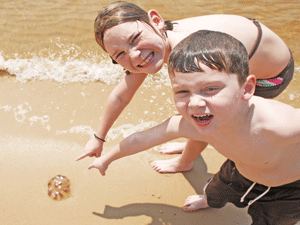Easing the Pain of a Jellyfish Sting – Advice from the Doctors at South Tampa Immediate Care
 Florida is home to spectacular beaches that rank among America’s most beautiful year after year. As you and your family enjoy your time on the waterfront, though, be aware that the ocean is inhabited by jellyfish, some of which can and do sting. Thankfully, with some general information about these creatures of the sea, you’ll have no need to be fearful or curtail your fun. The doctors at South Tampa Immediate Care offer the following advice on how to recognize poisonous jellyfish and what to do in the event of a sting.
Florida is home to spectacular beaches that rank among America’s most beautiful year after year. As you and your family enjoy your time on the waterfront, though, be aware that the ocean is inhabited by jellyfish, some of which can and do sting. Thankfully, with some general information about these creatures of the sea, you’ll have no need to be fearful or curtail your fun. The doctors at South Tampa Immediate Care offer the following advice on how to recognize poisonous jellyfish and what to do in the event of a sting.
Florida waters are home to several species of jellyfish, not all of which are harmful. Two common types to watch out for are moon jellyfish and sea nettle jellyfish. Moon jellyfish, the more benign of the two, are bluish in color with short tentacles, and range in size from 1 to 10 inches across. Sea nettle jellyfish vary in color from transparent with white spots to milky white or reddish hues, and range in size from 1 to 4 inches across. Both types — alive or dead — inflict stings that can cause painful welts and a tingling sensation throughout the body, along with possible temporary paralysis.
To ease the pain of a jellyfish sting, the following treatment is recommended:
-
Rinse and soak the area with vinegar for 30 minutes. If vinegar is unavailable, apply soap, shaving cream, baking soda, or a paste of sand or mud and seawater. Do not use bottled water or tap water, which can reactivate the stinging cells. Contrary to popular belief, urine does not contain enough acid to neutralize the venom.
-
Scrape the area with a razor or credit card to remove the stinging cells, and then rinse again with vinegar.
-
Restrict movement of the affected area to prevent the venom from being circulated to other areas of the body.
-
After rinsing thoroughly with vinegar, use ice packs to reduce swelling.
-
Apply hydrocortisone cream to relieve itching.
-
Take over-the-counter pain medications, if needed.
Though technically not a jellyfish, Portuguese man-o’-war, which resemble a blue bubble, often wash ashore on Florida beaches during the summer months. Man-o’-war can inflict an extremely painful sting, and detached tentacles and dead specimens can remain potent for hours or even days and can sting just as painfully as the live organism.
The venom of a man-o’-war differs from that of a true jellyfish. The best way to treat a man-o’-war sting is to:
-
Remove any remnants from the sting site, being careful not to touch them directly with your fingers or skin (use a credit card, shell, stick, towel, or clothing, which should be discarded afterwards).
-
Apply salt water to the affected area. Do not rinse with vinegar, which can increase the toxicity and worsen the symptoms.
-
Follow up with the application of hot water for 15-20 minutes.
For either type of sting, the victim should exit the water immediately to avoid the risks of drowning and being re-stung. Seek medical attention if the sting is on the face or covers a large area (more than half an arm or leg), the pain persists or intensifies, or a rash, fever, allergic reaction, breathing difficulty, nausea, or an overall feeling of illness develops.
The best way to avoid jellyfish stings is to heed the warnings of lifeguards, always pay close attention when walking along the beach and swimming in coastal waters, and never allow children to pick up “bubbles” they find in the sand or water. It’s also a good idea to bring along a first aid kit containing the items commonly used to treat stings – just in case.
For additional family safety and health tips, please take a look at our online series of health articles. If you have questions, feel free to contact or visit a Tampa doctor at the South Tampa Immediate Care walk-in clinic.












